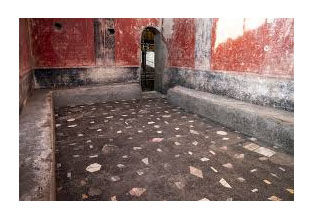
ROME :
Pompeii, the ancient Roman city that was buried by ash and lava in the year 70 AD, has found a new treasure. It is a private bathhouse that was constructed two thousand years ago. It is decorated with lavish mosaics and is equipped with a succession of hot, warm, and cold chambers in the style of a spa.
Gabriel Zuchtriegel, the director of the Pompeii archaeological site, stated that the thermal complex that is located in a private house in Pompeii is possibly the greatest thermal complex in the historic city. “The members of Pompeii’s ruling class would prepare enormous spaces in their homes in order to host banquets,” the historian writes.
They served the purpose of bringing about a consensus, the promotion of an election campaign, and the conclusion of accords. Both the chance to demonstrate the affluence in which they lived and the opportunity to have a pleasant thermal treatment were presented to them, as he stated.
The baths were discovered in the so-called Regio IX, which is a big central part of Pompeii park that has not yet been studied. Major archaeological investigations are currently uncovering new elements of the everyday life of Pompeians.
Archaeologists discovered a bakery, a laundry business, two villas, and the bones of three persons who had died as a result of the volcanic eruption of Mount Vesuvius, which was responsible for the destruction of both the ancient Roman cities of Pompeii and Herculaneum. These discoveries were made in the same region earlier this year.
According to Zuchtriegel, affluent residents of Pompeii would frequently take a bath before following it up with a meal. As a result, the private spa complex made it possible for them to consume both activities simultaneously within the same residence.
“There is space for approximately thirty people who could complete the entire routine, and this is something that could also be done in public baths.” He said that in addition to the calidarium, which is a very heated atmosphere, there is also a huge tub that is filled with cold water.

